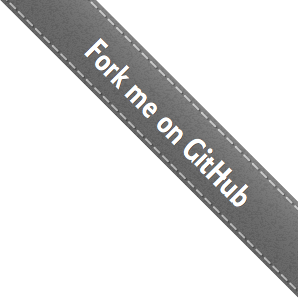Maintainer Guidelines
This guide is for maintainers. These special people have write access to Homebrew’s repository and help merge the contributions of others. You may find what is written here interesting, but it’s definitely not a beginner’s guide.
Maybe you were looking for the Formula Cookbook?
Quick checklist
This is all that really matters:
- Ensure the name seems reasonable.
- Add aliases.
- Ensure it uses
keg_only :provided_by_macosif it already comes with macOS. - Ensure it is not a library that can be installed with gem, cpan or pip.
- Ensure that any dependencies are accurate and minimal. We don’t need to support every possible optional feature for the software.
- Use the GitHub squash & merge workflow where bottles aren’t required.
- Use
brew pullotherwise, which adds messages to auto-close pull requests and pull bottles built by the Brew Test Bot. - Thank people for contributing.
Checking dependencies is important, because they will probably stick around
forever. Nobody really checks if they are necessary or not. Use the
:optional and :recommended modifiers as appropriate.
Depend on as little stuff as possible. Disable X11 functionality by default. For example, we build Wireshark, but not the heavy GTK/Qt GUI by default.
Homebrew is about Unix software. Stuff that builds to an .app should
probably be in Homebrew Cask instead.
Naming
The name is the strictest item, because avoiding a later name change is desirable.
Choose a name that’s the most common name for the project.
For example, we initially chose objective-caml but we should have chosen ocaml.
Choose what people say to each other when talking about the project.
Add other names as aliases as symlinks in Aliases in the tap root. Ensure the
name referenced on the homepage is one of these, as it may be different and have
underscores and hyphens and so on.
We now accept versioned formulae as long as they meet the requirements.
Merging, rebasing, cherry-picking
Merging should be done in the Homebrew/brew repository to preserve history & GPG commit signing,
and squash/merge via GitHub should be used for formulae where those formulae
don’t need bottles or the change does not require new bottles to be pulled.
Otherwise, you should use brew pull (or rebase/cherry-pick contributions).
Don’t rebase until you finally push. Once master is pushed, you can’t
rebase: you’re a maintainer now!
Cherry-picking changes the date of the commit, which kind of sucks.
Don’t merge unclean branches. So if someone is still learning git and
their branch is filled with nonsensical merges, then rebase and squash
the commits. Our main branch history should be useful to other people,
not confusing.
Testing
We need to at least check that it builds. Use the Brew Test Bot for this.
Verify the formula works if possible. If you can’t tell (e.g. if it’s a
library) trust the original contributor, it worked for them, so chances are it
is fine. If you aren’t an expert in the tool in question, you can’t really
gauge if the formula installed the program correctly. At some point an expert
will come along, cry blue murder that it doesn’t work, and fix it. This is how
open source works. Ideally, request a test do block to test that
functionality is consistently available.
If the formula uses a repository, then the url parameter should have a
tag or revision. urls have versions and are stable (not yet
implemented!).
Common “gotchas”
- Ensure you have set your username and email address properly
- Sign off cherry-picks if you amended them (GitX-dev can do this, otherwise there is a command-line flag for it)
- If the commit fixes a bug, use “Fixes #104” syntax to close the bug report and link to the commit
Duplicates
We now accept stuff that comes with macOS as long as it uses keg_only :provided_by_macos to be keg-only by default.
Add comments
It may be enough to refer to an issue ticket, but make sure changes are clear so that if you came to them unaware of the surrounding issues they would make sense to you. Many times on other projects I’ve seen code removed because the new guy didn’t know why it was there. Regressions suck.
Don’t allow bloated diffs
Amend a cherry-pick to remove commits that are only changes in
whitespace. They are not acceptable because our history is important and
git blame should be useful.
Whitespace corrections (to Ruby standard etc.) are allowed (in fact this is a good opportunity to do it) provided the line itself has some kind of modification that is not whitespace in it. But be careful about making changes to inline patches—make sure they still apply.

